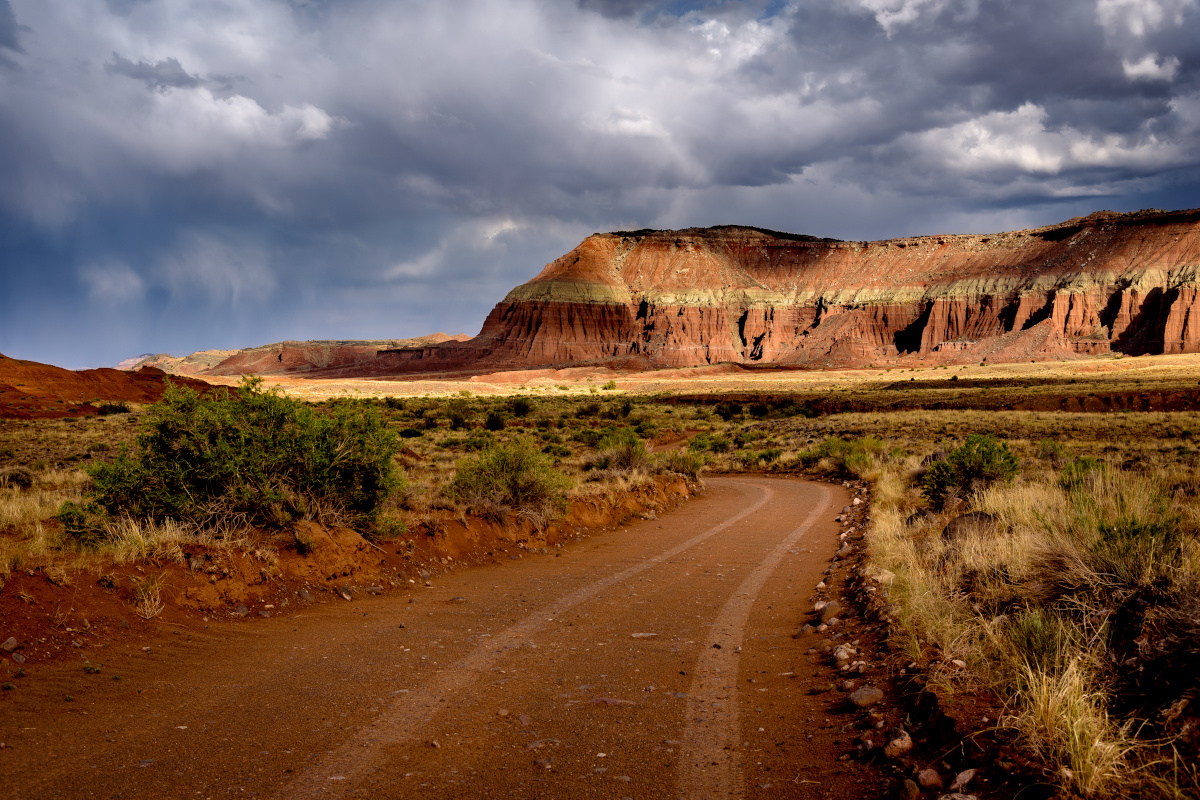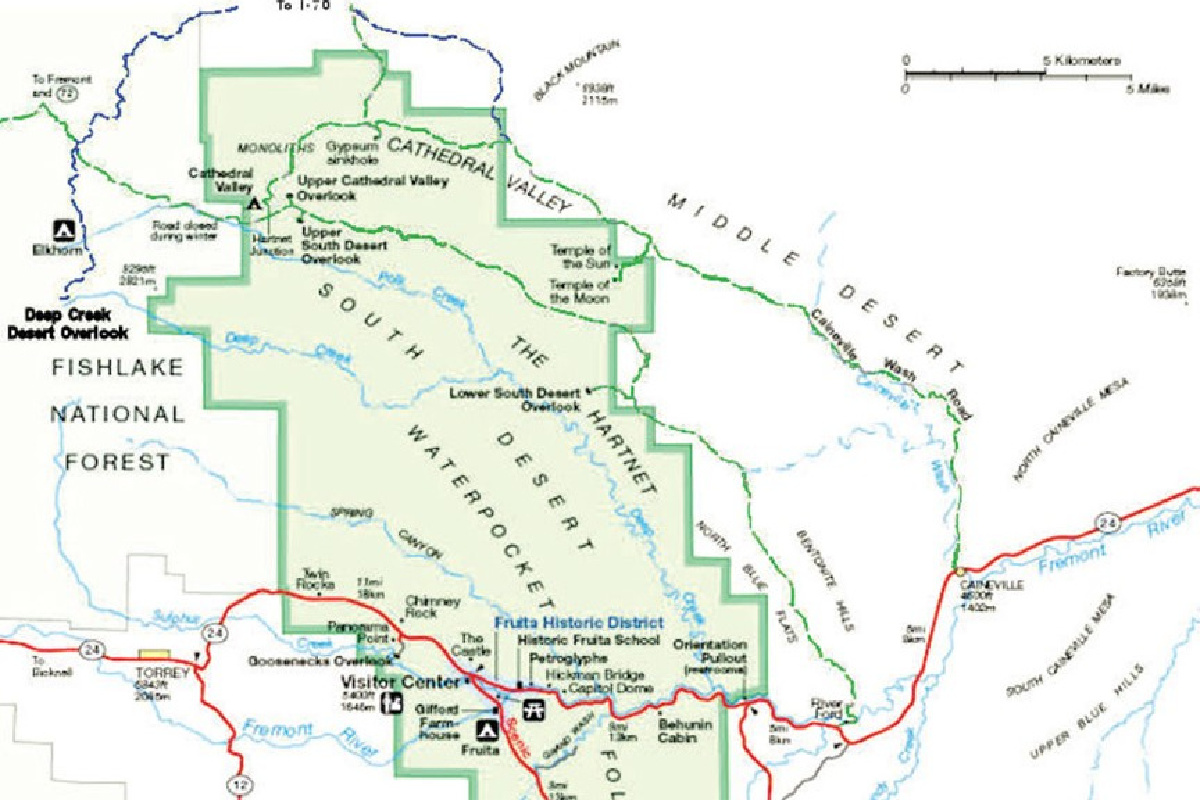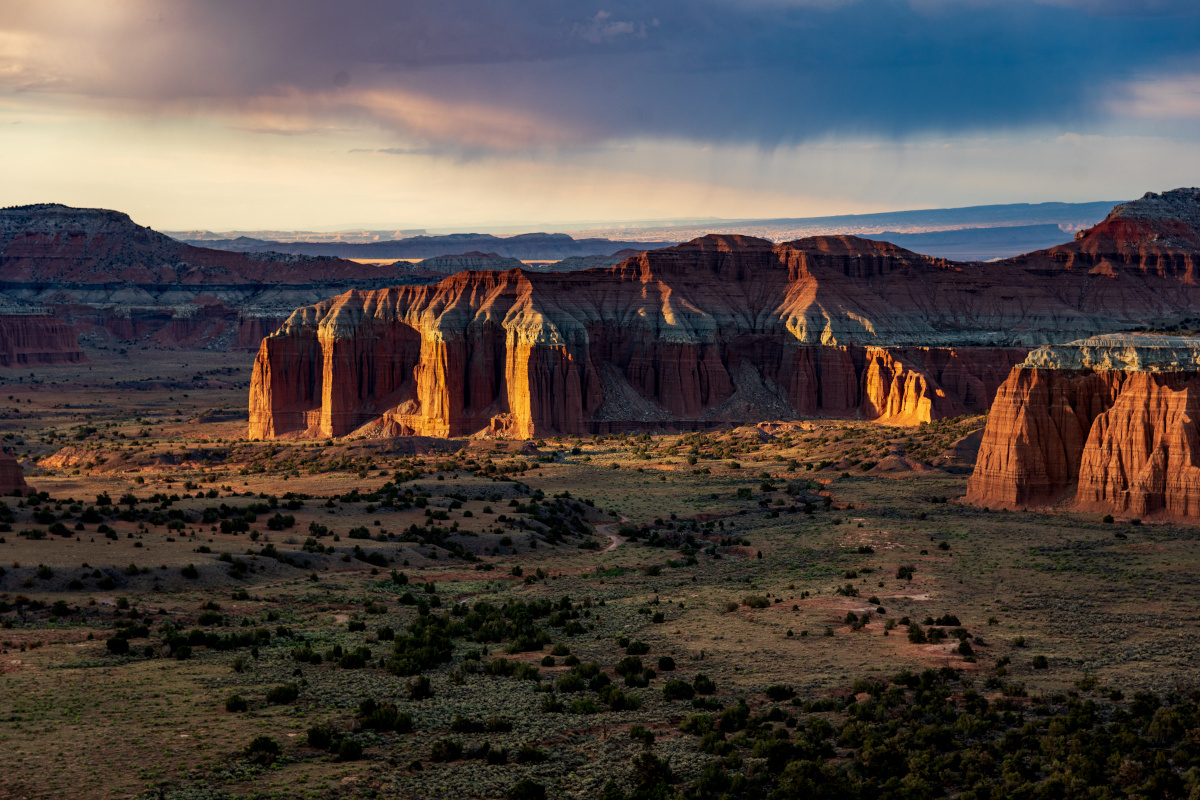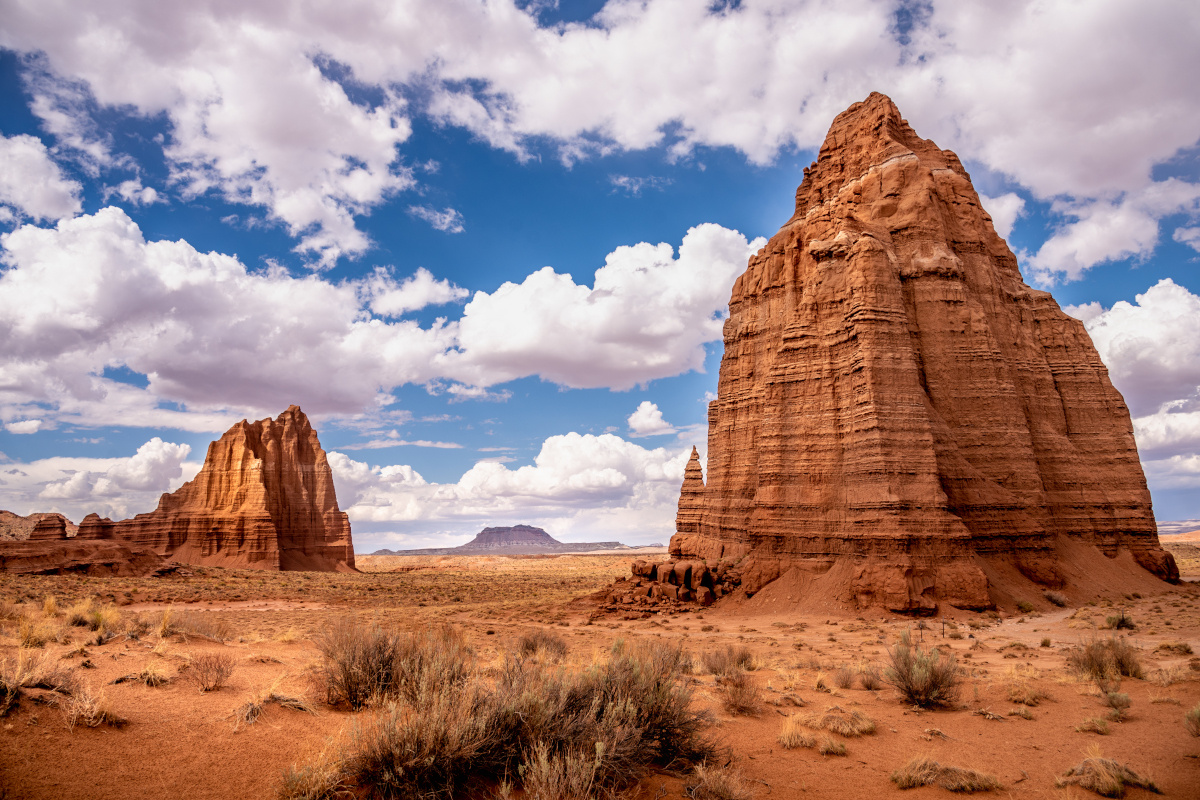
Capitol Reef National Park is one of the larger parks in Utah covering miles of scenic and adventurous terrain that can best be seen and experienced in sections. One of these sections is Cathedral Valley located in the upper region of the park north of Highway 24.
Much of Capitol Reef is primitive backcountry high desert that is accessible by unpaved roads only, many of which require high clearance vehicles and, in some cases, four-wheel drive. However, most vehicles without four-wheel drive can usually negotiate the roads without difficulty.
Prior to visiting the backcountry areas of Capitol Reef, we strongly recommend checking with the park’s visitors center on road conditions before exploring these primitive areas. Cathedral Valley is one such area that you’ll want to check on in advance. The park service offers a number for road conditions. Call 435-425-3791, press #1 for information, and then #4 for road conditions.
The Cathedral Valley Loop Road The 60-mile loop road begins and ends at Highway 24 from the Hartnet Road (river crossing) to the west and Caineville Wash Road farther east. It takes approximately 6-8 hours to drive the road, but you’ll want to spend more time exploring the sites, so plan accordingly. The road is entirely on graded dirt and in some sections the road is sandy and becomes rough and rocky in others. There are sections of this road you will want to avoid in wet conditions that make it impassable, especially in the Bentonite Hills outside of the park boundaries.
Most of the Loop runs through Capitol Reef National Park with some sections on BLM (Bureau of Land Management) public land. There is no charge to drive through the park on this road.

Be aware that driving the full loop, entering or exiting at Hartnet Road requires fording the Fremont River from with flows that change frequently, especially during spring runoff and summer monsoon season. This remote and rugged region is miles from the nearest town. Cell service is spotty at best. Go prepared with emergency essentials in the unlikely event you encounter a problem with your vehicle. The park service recommends carrying plenty of water, food, gas, adequate clothing, a shovel, and emergency supplies.
Picturesque Landscapes Cathedral Valley truly showcases the landscape of Capitol Reef Country’s temples in stone. Towering monoliths, buttes, pinnacles, and mesas in hues of orange, red, and coral pink are some of the park’s most iconic formations. This is where photographers come to capture the ever-changing light and color. Highly dramatic skylines and views of eroded valleys are accessible by road with high points offering million-dollar views in every direction.

Hartnet Cathedral Road Approximately 12 miles east of the visitors center on Highway 24, the Cathedral Valley Loop crosses the Fremont River, watch for the road on the north side of the highway. Once you cross the river continue on the Hartnet Cathedral Road 28 miles where you turn right onto the Cathedral Valley Road. Along this first stretch from Highway 24 there are a number of points of interest worth visiting including the Water Well Oasis where an old rusted out water truck is located. The road then passes through the multi-colored Bentonite Hills, which can become impassable when wet. A short distance past the Bentonite Hills is a side trip to the Lower South Desert Lookout where you can park and take a short hike to the lookout. Just before the turn on Cathedral Valley Road another side trip leads to Upper Cathedral Valley Lookout where you can once again park and take a short hike to the lookout.

Cathedral Valley Road The Cathedral Valley Campground is located about a quarter mile past the turn onto the Cathedral Valley Road. This is a primitive, no-fee campground with six sites, picnic tables, fire grates, and pit toilet. From the campground the Cathedral Valley Road leads to a number of points of interest, scenic landscapes and viewpoints. Not far from the campground there are turnouts where you can hike to overlooks of some of the best views of Cathedral Valley. Six miles from the campground is the Gypsum Sinkhole. Formed when groundwater dissolved a buried gypsum plug, the Gypsum Sinkhole is a cavity left behind when the weight of overlying rocks collapsed. This collapse created a large sinkhole nearly 50 feet in diameter and 200 feet deep. Access to the sinkhole requires a high clearance vehicle.
Gypsum Sinkhole to Temple of the Sun Several points of interest are worth checking out between the Gypsum Sinkhole and Temple of the Sun and Temple of the Moon, which are two of the more well-known features of Cathedral Valley.
According to the official national park website, “Dikes and sills are the result of molten lava flowing into vertical joints (dikes) or between horizontal layers of sedimentary rocks (sills), then solidifying.” Both can be seen on this stretch of road with spur roads leading to closer views and exploration.

Glass Mountain is a mound or hill of composed of selenite crystals (gypsum). This can be seen on the drive to see the Temple of the Sun and Temple of the Moon. These two monolithic rocks are the icons of the park and worth visiting. A short drive down the Temple of the Moon Road will lead you to the sites, which are a short distance apart from one another. This is one of the more popular places for photographers to shoot night sky using the monoliths as the foreground in Milky Way photos.
The 17-mile drive back to Highway 24 is filled with amazing views with an option to take the Factory Butte Road to another section of the Caineville Desert adjacent to the North Caineville Mesa.
Keep Capitol Reef Country Forever Mighty
What is Forever Mighty? It’s practicing responsible travel while visiting Utah and Capitol Reef Country by following the principles of Tread Lightly and Leave No Trace.
Plan ahead and prepare, travel and camp on durable surfaces, dispose of waste properly, leave what you find, minimize campfire impacts, respect wildlife, be considerate of others, support local business and honor community, history and heritage. Help us keep Utah and Capitol Reef Country’s outdoor recreation areas beautiful, healthy, and accessible.
